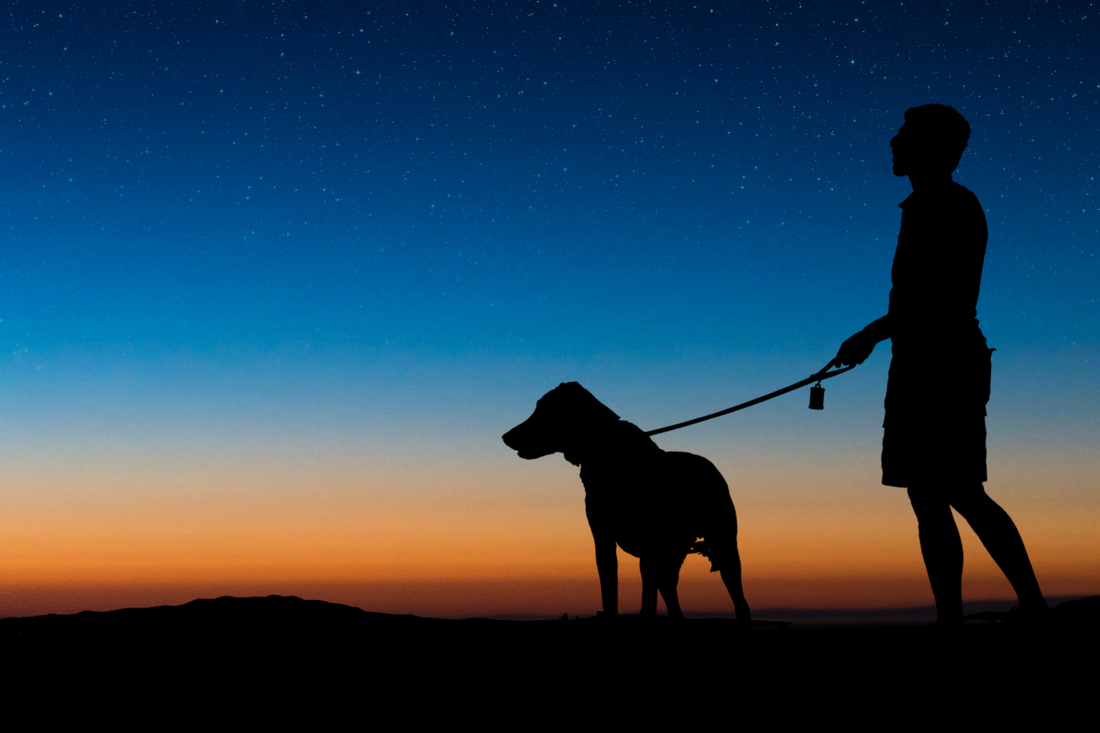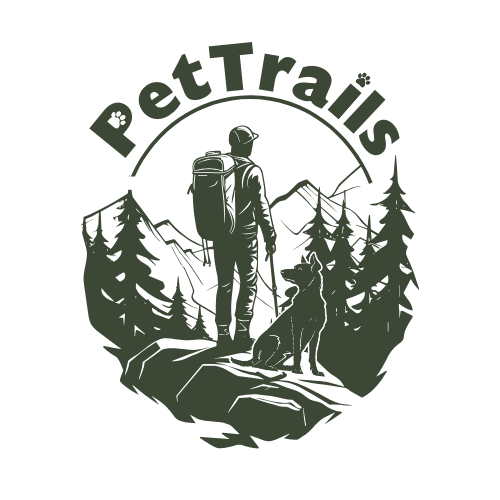
Hiking After Sunset: Gear and Safety Tips for Night Walks with Your Dog
Share
Night hiking can deepen your bond with your dog and offer a peaceful escape from busy trails—but it comes with unique risks that require smart preparation.
In this guide, we’ll walk you through essential safety tips, training considerations, gear must-haves, and environmental awareness to make your nighttime adventures safe and magical.
Why Try Night Hiking with Your Dog?
Night hiking isn't just a novelty—it can be a strategic choice:
- Cooler Conditions: Especially great for dogs with heavy coats or heat sensitivity.
- Quiet Trails: Avoid crowds and distractions.
- Beautiful Stargazing: Pause mid-hike and soak in the night sky.
But when the sun goes down, both you and your dog face new challenges—from limited visibility to nocturnal wildlife.
Training Your Dog for Night Hiking
Start with Reliable Recall
Before hitting the trail after dark, train your dog to reliably come when called—even with distractions. Reduced visibility can make voice commands critical, especially if your dog wanders a few feet off-trail.
Tip: Practice recall in low-light environments at home before trying it on the trail.
Check Trail Access and Local Rules
Know Before You Go
Many parks and trails have strict closing times—some prohibit access after sunset due to wildlife protection or safety concerns. Always check local regulations before planning a night hike.
You can usually find this info on the park’s official website or posted at the trailhead.
Emergency Preparedness
Create a Simple Emergency Plan
Have a written emergency plan that includes:
- Nearby 24/7 veterinary clinics (with addresses and phone numbers).
- GPS coordinates of your hike start/end points.
- Names of your hiking group (if any).
- Emergency contact info.
Example: “Emergency Vet: Blue Ridge Animal Hospital – (555) 987-6543, 9 miles from trailhead.”
Understanding Your Dog’s Night Vision & Behavior
How Well Can Dogs See in the Dark?
Dogs do see better in the dark than humans due to more rod cells in their retinas and a reflective layer called the Tapetum lucidum. However, they still rely on some ambient light. In pitch darkness, even dogs are disoriented.
Don’t expect your pup to navigate perfectly—help them with a lighted path and voice cues.
Sound Travels Differently at Night
At night, cooler air near the ground can carry sound more efficiently and over longer distances. This means forest rustles or distant footsteps may sound louder or closer, potentially startling your dog.
Be patient and soothing if they seem anxious. Training and familiar sounds (like your voice or a familiar bell) can help keep them calm.
Gear Essentials for Nighttime Dog Hikes
For Your Dog:
- LED Collar or Clip-On Light – Visibility is everything.
- Reflective Harness/Vest – Adds an extra layer of safety.
- Paw Protection – Consider boots or wax for cold or rough terrain.
- Collapsible Water Bowl & Treats – Hydration and motivation.
- ID Tags & GPS Tracker – Non-negotiable for off-grid hikes.
For You:
- Headlamp + Flashlight + Backup Glow Stick – Don’t rely on a single light. Darkness is disorienting without redundancy.
- Power Bank & Spare Batteries – Especially for multi-hour hikes.
- Trail Map or Offline GPS App – Signal might be spotty.
- First Aid Kit (with pet-safe supplies) – Include vet wrap, antiseptic wipes, and tweezers for splinters or ticks. For a full breakdown of what to pack, check out our guide on building a DIY First Aid Kit for Hiking with Your Dog.
- Warm Layers – Temperatures can drop fast at night, particularly in deserts or high-altitude trails.
Watch your dog for early signs of getting too cold: shivering, lifting paws off the ground, slowing down, or seeking shelter.
Post-Hike Inspection
When you get back to the trailhead (or home), do a full body check:
- Look for ticks, especially between toes and ears.
- Check for thorns or burrs caught in fur.
- Examine paws for cuts, abrasions, or cracked pads.
- Hydrate and feed your pup if needed—and give them a cozy spot to rest.
Nighttime Trail Etiquette
Sharing trails at night takes extra care:
- Announce Yourself Politely: Let others know you're approaching, especially if using a bright light.
- Leash Up Around Others: Keep your dog close in narrow passes or when meeting unfamiliar hikers or dogs.
- Minimize Noise Pollution: Use soft voices and quiet gear to preserve the peaceful night for everyone.
Bonus Tip: A reflective vest or glow tag on you can also help other hikers or cyclists see you from a distance.
Final Thoughts
Night hiking with your dog is a beautiful, serene experience that deepens trust and opens up a new side of the natural world. With thoughtful planning, proper training, and reliable gear, it can become one of your favorite shared adventures.
Ready to hit the trail after dark?
Explore more tips on our PetTrails Blog. And if you've tried hiking at night with your dog, we'd love to hear your experience in the comments!
